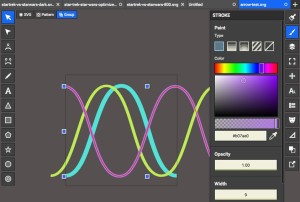 In my post, “Warning: 6 Signs You Are About To Hire A Bad Designer Or Developer,” one of my warning signs was that the designer or developer did not have examples of past work. While I understand how it might be difficult for a back-end developer to visually display their work (although it is possible to provide some kind of example of what you can do), a web designer should not have this problem.
In my post, “Warning: 6 Signs You Are About To Hire A Bad Designer Or Developer,” one of my warning signs was that the designer or developer did not have examples of past work. While I understand how it might be difficult for a back-end developer to visually display their work (although it is possible to provide some kind of example of what you can do), a web designer should not have this problem.
I am always surprised to find a web designer who does not have some sort of portfolio. Not having a portfolio is a major disadvantage when an anonymous potential client is trying to compare your work to others in order to determine who to hire.
Why don’t you have a portfolio?
For one thing, the designer may have only designed corporate websites or worked on private projects and may not have access or permission to display the sites or pieces of the sites that they designed.
Second, the web designer may just be starting out on their own. Perhaps they were in school and did not have any real world experience that they could show online.
Lastly, I suppose a designer who is not actively looking for work would think it’s not necessary to have a portfolio. Although in this case, I can certainly make an argument why it will save you time and work later to maintain a portfolio as you go anyway, as you never know when your situation might change.
If you fit into one of these categories, it makes sense that you may not have a portfolio. However, a potential client searching for a designer is not thinking about why you don’t have a portfolio. They just know that you do not. If you are looking for work, it may be worth your time and effort to beef up your portfolio by taking on some charitable work, customizing the design of your blog, or creating some other tool you can use to show what you can do.
Can I see some samples of your work?
Many times, your portfolio (and your website) is your first chance to impress a prospective client. And clients are looking for some very specific things. Here are three necessities your portfolio should include:
- Samples of Work: It may be obvious, but keep in mind you don’t have to limit yourself to complete and active websites. Samples can take many forms — links, screenshots, interactive tours, even videos.
- Summary: Along with giving a visual idea of what you did, provide a summary explaining your role in the project.
- Contact Information: Make sure you include a way for potential clients to contact you with questions or for more information.
Another way to give the client more information about what you can do is by creating a case study, which is simply just a more in-depth look at the project. This is a great idea if you have one or two projects you are particularly proud of and think offer potential clients useful information.
If you are very experienced, keep in mind that your portfolio doesn’t have to include everything you’ve done. It’s meant to be an overview highlighting your best, most creative and unique projects. Check out these articles for some great portfolio development tips:
Creating A Successful Online Portfolio, by Sean Hodge for Smashing Magazine
How to Make Your Portfolio Work for You, by Angela Ferraro-Fanning for Freelance Switch
12 Steps to a Super Graphic Design Portfolio on YouTheDesigner
Image credit: Craig Jacobs
Alyssa Gregory is a digital and content marketer, small business consultant, and the founder of the Small Business Bonfire — a social, educational and collaborative community for entrepreneurs.





